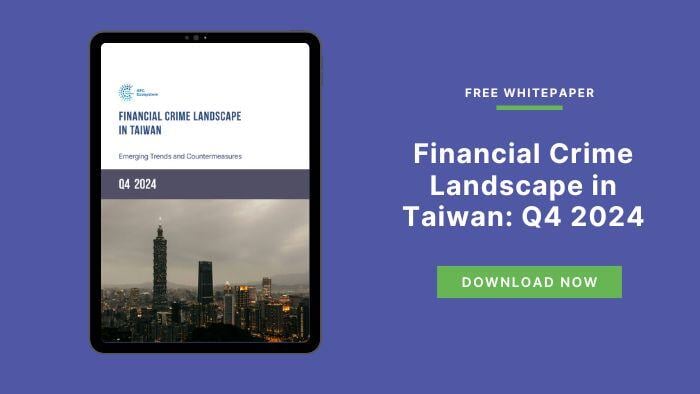Romance Scams in Taiwan: A Rising Threat in the Digital Age
In Taiwan’s fast-growing digital economy, love is not the only thing going online—so is fraud. Among the country’s top financial crime threats, romance scams are quietly evolving into a deeply damaging and emotionally manipulative form of financial fraud.
Often tied to “pig butchering” schemes, these scams don’t just break hearts—they drain bank accounts. In this blog, we unpack how romance scams are executed, why Taiwan is seeing a spike, and what financial institutions must do to detect and prevent these crimes effectively.
What Is a Romance Scam?
A romance scam involves a fraudster posing as a romantic interest to gain the trust of their victim and eventually exploit them financially. These scammers build relationships over time—weeks or even months—before making emotionally charged requests for money.
Scammers use dating apps, social media platforms, and even messaging apps like LINE and WhatsApp to identify and groom victims. In Taiwan, this type of scam is increasingly intertwined with investment fraud, where the victim is led to believe they're making a smart financial decision—often through fake crypto or trading platforms.
The Rise of Romance Scams in Taiwan
In Q4 2024, Taiwan’s financial crime ecosystem faced an alarming increase in romance scam cases. The country’s Financial Supervisory Commission (FSC) has flagged this threat as a growing concern, and experts across the AFC Ecosystem have reported similar trends.
These scams typically follow a grooming process: it begins with building trust through fake identities and emotional connections. After months of interaction, the scammer introduces a fabricated financial emergency or an investment opportunity. Victims are then persuaded to transfer money—often repeatedly—using digital channels designed to avoid detection.
Many of these payments are structured in small amounts and routed through digital banks, e-wallets, and even QR-code merchant accounts, making them difficult to trace. Some victims have lost more than NT$1 million in such schemes, and the emotional damage makes these cases severely underreported.
How Romance Scams Are Executed
Fraudsters employ a variety of manipulative tactics. One common method is the use of fake investment platforms, where victims are convinced to move their savings into what appears to be a legitimate opportunity. These platforms are often accompanied by sleek designs and simulated dashboards to build credibility.
Long-term grooming is also a hallmark—scammers may spend months building rapport, communicating daily, and weaving false narratives of love or business ventures. When the time comes, they introduce financial “emergencies” or “once-in-a-lifetime” opportunities.
Payments are carefully structured and spread across multiple accounts, often using digital banks, merchant QR codes, or peer-to-peer transfers. Scammers avoid verification methods like video calls and in-person meetings, further maintaining their anonymity.
Why Taiwan Is a Target
Several factors contribute to the rise of romance scams in Taiwan:
-
Digital Adoption and Trust Culture: Taiwan has high smartphone penetration and widespread usage of digital platforms, making it easy for scammers to reach victims online. The local culture also places a high value on relationships and trust, which scammers exploit.
-
Widespread E-Wallet and QR Code Payments: Taiwan’s adoption of QR-based payments (TWQR) and e-wallets makes it easy to move funds instantly without raising red flags—ideal conditions for fraudsters structuring payments across multiple platforms.
-
High-Value Targets: Many victims are working professionals or retirees with savings or credit access. Scammers also target those emotionally vulnerable or seeking companionship.
Real-World Case: Groomed, Scammed, and Left Behind
In one documented case from Taiwan, a retiree was manipulated by a scammer she met through Facebook. Over the course of six months, they exchanged messages daily. Eventually, she was convinced to invest in a “cryptocurrency opportunity” that turned out to be fake.
She transferred over NT$2 million in multiple structured payments via e-wallets and merchant QR codes. The funds were then moved through a web of merchant accounts and withdrawn overseas. Once alerted, the bank couldn’t retrieve the funds, and the victim never heard from the scammer again.
Impact on Financial Institutions
Romance scams are more than a consumer issue—they present real risks to financial institutions:
-
Compliance Gaps: Most of these scams fall under AML risk categories but evade detection due to structured low-value transfers and the use of new digital payment channels.
-
False Positives Overload: Traditional rule-based systems trigger a high number of false alerts that strain compliance teams while still failing to catch these types of fraud.
-
Reputation Risk: Banks seen as doing little to protect vulnerable users could face consumer backlash and lose trust in the market.
How Can Banks Detect and Prevent Romance Scams?
To tackle the growing threat of romance scams, Taiwan’s financial institutions must evolve beyond conventional approaches. Here are five critical areas of action:
-
AI-Powered Transaction Monitoring
Deploy machine learning-based systems that understand customer behavior and flag unusual activity. Tookitaki’s FinCense platform, for instance, uses real-time analytics to detect structured payments, merchant layering, and suspicious account behavior. -
Dynamic Customer Risk Scoring
Risk scoring should be fluid and contextual. For example, sudden transfers to new beneficiaries, frequent QR code payments, or increased activity on weekends could trigger enhanced monitoring. -
Scenario-Based Detection
Institutions should implement scenarios that mirror real-world scam behaviors, including grooming patterns, digital asset purchases, and multi-account layering. -
Customer Awareness & Education
Run regular awareness campaigns through email, SMS, and in-app messages. Educating users on common scam narratives can be just as effective as backend detection in stopping scams early. -
Cross-Institution Collaboration
Share red flags, mule account details, and scam typologies across financial institutions. Industry-wide intelligence is crucial to outpace scam syndicates operating across borders.
Regulatory Push in Taiwan
The FSC is rolling out tighter regulations and AML frameworks to mitigate romance and investment scams. New measures introduced in 2024 include:
-
Mandatory transaction monitoring for e-wallet operators
-
Stricter onboarding checks for QR code merchants
-
Expanded guidelines for Suspicious Transaction Reports (STRs)
These changes aim to close loopholes in Taiwan’s financial system that have been exploited by scam syndicates.
How Tookitaki Is Supporting Institutions in Taiwan
At Tookitaki, we work closely with financial institutions across Asia—including in Taiwan—to proactively combat fraud and money laundering.
Our AI-powered AML suite enables:
-
Behavioral detection of romance scam transactions
-
Scenario-driven monitoring that evolves with scam scenarios
-
Real-time alerts and intelligent prioritization for faster decision-making
We also support cross-border financial intelligence through federated learning—enabling institutions to benefit from community-driven insights without sharing raw data.
Final Thoughts
Romance scams in Taiwan are no longer rare incidents—they are part of a broader financial crime ecosystem exploiting digital tools, human psychology, and gaps in detection systems. The time to act is now.
By integrating AI-powered tools like Tookitaki’s FinCense platform, improving risk scoring, and fostering cross-industry collaboration, banks and fintechs can stay ahead of fraudsters and protect their customers’ money—and peace of mind.
Love shouldn’t come at a cost. Let’s stop scams before they start.
Anti-Financial Crime Compliance with Tookitaki?






